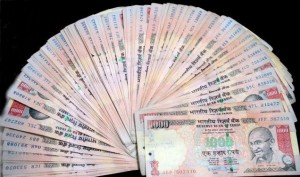‘Make in India’ campaign launched by Prime Minister Narendra Modi, is yet another initiative of his that has gained appreciation and attention both in the country and abroad. The main intention behind the campaign is to boost domestic manufacturing and create new jobs. Let’s take a closer look at the government’s proposals to introduce a new policy for Micro, Small and Medium Enterprises (MSMEs).
The MSME sector in India deserves the attention for many reasons:
- Despite the economic slowdown, it has recorded more than 10 per cent growth in the past few years.
- MSMEs contribute around 8 per cent to the national GDP.
- Employ more than eight crore people in nearly four crore enterprises
- Accounts for 45 per cent of manufactured output and 40 per cent of exports from India.
The MSME sector thus has a huge potential for providing growth and employment. And for this reason, the government’s close interaction with industry associations from different regions and sectors within India to discuss specific problems inhibiting domestic enterprises deserves the same consideration as the PM’s vision of inviting international companies to invest in the country.
Overall initiatives:
The significance of the sector has been highlighted by the government earlier also by giving it good amount of importance in the first budget. Two of the most noteworthy initiatives were:
- Setting up of Rs.10, 000 crore of venture capital fund.
- Establishing a nationwide, district-level incubation and accelerator programme for encouraging entrepreneurship.
Some of the other important budgetary announcements were:
- Establishing a network of Technology Centres.
- Revising the definition of MSMEs for providing higher capital ceiling.
- Friendly legal bankruptcy framework to enable easy exit.
- Deciding to put in place a programme to facilitate forward and backward linkages with multiple value chain of manufacturing and service delivery.
- Launching the Skill India movement for youth with an emphasis on employability and entrepreneurship.
Apart from these, a committee was also proposed so that the financial architecture could be examined and the bottlenecks could be removed in addition to creating new rules and structures for the sector.
The government recently inaugurated a holistic, innovative and low-cost National Small Industries Corporation’s online e-commerce shopping portal for buying and selling of products produced by MSMEs.
What exactly MSMEs are:
MSMEs are manufacturing and service enterprises, having a specific stipulated limit on investment in plant and machinery for each of the respective micro, small and medium segments in manufacturing with a maximum limit of Rs.10 crore, and for equipment in service enterprises with a maximum limit of Rs.5 crore.
The MSMEs with 94 per cent of units unregistered are characteristically diverse in their size and the level of technology used. In fact, the production in the sector ranges from output of grass-root village industries and auto components, to electronic components, microprocessors and electro-medical devices.
Establishment, evolution and problems:
Right after independence, dating back to 19848, consecutive governments dedicated strong and gradual efforts to encourage MSMEs. In 1954, the office of Development Commissioner for MSMEs was created and then a dedicated Ministry was set up in 1999.
The Small Industries Development Bank of India (SIDBI) was established in 1990. It is the principal financial institution for promotion, financing and development of the MSMEs in addition to commercial banks, State financial corporations and State industrial development corporations.
Despite such efforts, MSMEs continue to be under stress and problems related to availability of technology, infrastructure and managerial competence and limitations posed by labour laws, taxation policy, market uncertainty, imperfect competition and the skill level of the workforce.
Also read: RBI to Issue Guidelines for Smaller Finance Banks
Finding a solution:
The MSMEs segments surely resemble each other closely but the fact still remains that they produce very diverse products, use different inputs and operate in distinct environments. Therefore the problems faced by various MSMEs are different from one another and need to be thought about in a disaggregated manner, to bring about a successful policy implementation.
On the whole, not only labour-friendly laws and tax provisions but the entrepreneur-friendly ones are also required. Skill formation and upgradation, both for labour and entrepreneurs is needed.
While the government has to focus on strengthening the existing skilling efforts for labour, it cannot afford to leave the entrepreneurs ignored. There is an urgent need for managerial skill development for entrepreneurs running MSMEs — an area that is considerably neglected.
These programmes for entrepreneurs could be offered in a structured way in Industrial Training Institutes and management schools to include modules on financial markets, management, accounting, labour laws, procurement and marketing skills. Further, the government could consider dedicated television and radio programmes, similar to agriculture, to help educate entrepreneurs running small businesses.
Also, since the taste of an average consumer has been evolving due to greater integration with global markets, in order to keep pace with changing tastes, big commercial firms have made ample investment in extensive research and developing suitable product ranges. On the other hand, due to lack of proper resources, many micro and small enterprises are unable to invest in R&D and develop new product.
Support from government in undertaking research to help develop new products that are being produced by MSMEs could be very helpful, similar to what agriculture universities do. Drawing inspiration from phulkari of Punjab, bamboo works of Assam and West Bengal, and cotton weaving of Tamil Nadu, the country could showcase and endorse the products of MSMEs via galleries and museums.
Financial focus:
More than units in the MSME sector are dependent on self-finance as troubles related to credit, like adequacy, timely availability, cost and mortgages continue to haunt them. Owing to stiff competition and the small size of firms, profit margins are extremely thin. Financial inclusion by government can come handy in uplifting MSMEs from credit crunch.
The government could consider dedicating specialised financial schemes for addressing difficulties in assessing and providing credit for the MSMEs, as also providing line of credit to firms which are under financial stress. Given the grand financial inclusion initiative, maximum employment and growth with minimum difficulty to the entrepreneur will augur well for the country.
About Tushita
Tushita is a political writer at thenational.net. Her deep rooted interest in politics, passion for writing and craze for travelling define her. Writing since her school days, she aspires to write lifelong and make the world a happier place to live with the power of her pen.




















